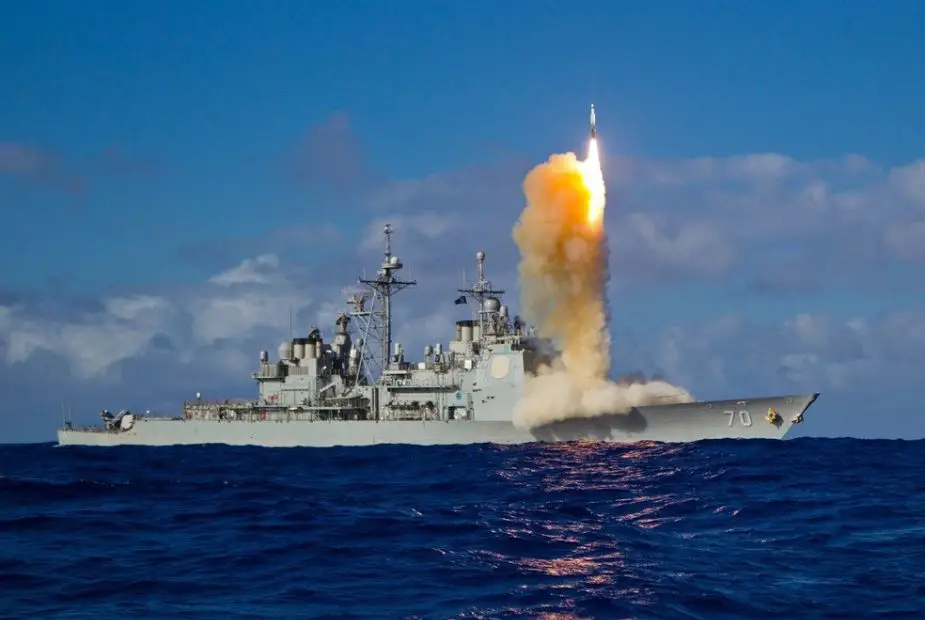Breaking news
South Korea Enhances Its Missile Defense Capabilities with US SM-3 Acquisition.
As reported by Yonhap News Agency on April 26, 2024, South Korea plans to enhance its missile defense capabilities by purchasing Standard Missile-3 (SM-3) interceptors from the United States. The defense procurement agency of South Korea has indicated that this missile system will be procured through intergovernmental military sales and is expected to be operational by 2030, at an estimated cost of $583.4 million.
Follow Navy Recognition on Google News at this link
 A Standard Missile-3 (SM-3) Block 1B interceptor missile was launched from the USS Lake Erie (CG 70), a guided-missile cruiser, during a joint test by the Missile Defense Agency and the U.S. Navy in the mid-Pacific (Picture source: US DoD)
A Standard Missile-3 (SM-3) Block 1B interceptor missile was launched from the USS Lake Erie (CG 70), a guided-missile cruiser, during a joint test by the Missile Defense Agency and the U.S. Navy in the mid-Pacific (Picture source: US DoD)
The SM-3, developed by Raytheon Missiles & Defense, is an integral part of the U.S. Navy's Aegis Ballistic Missile Defense System. Designed primarily for engaging short to intermediate-range ballistic missiles, the SM-3 operates during the midcourse phase of a missile's trajectory, outside the Earth's atmosphere. Typically effective at altitudes over 100 kilometers, its exo-atmospheric intercept capability highlights its critical role in missile defense strategies.
Employing a kinetic hit-to-kill mechanism, the SM-3 destroys targets by colliding with them, relying on the impact's kinetic energy rather than an explosive warhead. It features a multi-stage rocket booster and an advanced kinetic warhead equipped with precision guidance systems. Deployed aboard Aegis-equipped destroyers and cruisers, the SM-3 has demonstrated its effectiveness in various tests, intercepting and neutralizing missile threats successfully.
The system will be installed on South Korea's Aegis destroyers, significantly enhancing their defensive capabilities. In addition, the Defense Acquisition Program Administration (DAPA) has approved a 3.25 trillion won initiative for constructing Ulsan-class Batch-IV frigates by 2032 to update the aging fleet.
Furthermore, DAPA has greenlit a 1.57 trillion won project for developing long-range air-to-air missiles for the domestically produced KF-21 fighter jets, spanning from 2025 to 2038. Korea Aerospace Industries Ltd has already developed six prototypes of the KF-21, with the first production model expected to be delivered to the Air Force in the latter half of 2026.
These measures are part of South Korea's ongoing efforts to modernize its defense capabilities in response to regional security challenges. South Korea faces multiple security threats, chiefly from the unpredictable regime in North Korea. The persistent risk posed by North Korea's ballistic and nuclear missile programs necessitates continual vigilance and defense investments. Additionally, South Korea navigates complex regional relations with China and Japan and manages the implications of American military presence on its soil. Maritime issues in surrounding waters, including territorial disputes and security concerns over crucial navigation routes, further complicate the security landscape.


























